Romania is located in Central and Southeastern Europe. In between Bulgaria and Ukraine, the country borders the Black Sea from the Southeast. Nearly all of the Danube Delta River is located within the Romanian territory.

Romania shares its borders with four neighboring countries: Serbia and Hungary to the west, Ukraine and the Republic of Moldova to the northeast, and lastly, Bulgaria to the South.
Romania is ranked 9th among the largest territories and has the 7th rank for its large population of 21.5 million people among the European Union States. Bucharest is the capital of Romania and also the largest city of the country. Among the largest EU cities, it has the 6th rank with a total of 1.9 million people.
An important date to acknowledge for this country is March 29th 2004 when Romania joined NATO. Moreover, it is also a member of the Latin Union, the OSCE, the United Nations and the francophone countries.
January 1st 2007 marked the entry of Romania in the European Union.
History
The history of Romania can be traced as far as 2,000 years BC and is known to be among the finest and oldest findings in all of Europe.
To have a better understanding, the Romanian history started in the Ancient years when the land was inhabited by the Greek Thracian tribes who founded the state of Dacia. The Romans made many conquests to eventually rule the Dacians. At the end of the first century and the beginning of the second, the territory entered under Roman dominance.
During the Dark Ages many nomad people crossed the territory, including the Huns, Tatars, Goths and Slavs and the Romanian culture and language were mildly shaped by these cultures.
During the Middle Ages, the most important regions of today's Romania were separate entities, each inhabited by Romanians: Transylvania, Moldavia and Wallachia.
Except Transylvania, the other regions were independent and united in 1859 under Alexandru Ioan Cuza.
The independence was recognized in 1878 and Romania became the first independent national state in Eastern Europe at that time.
Transylvania, Bessarabia (today's Republic of Moldova) and Bukovina (today is Ukrainian territory) joined the independent territory and formed 'Greater Romania' in 1918, as a result of WW I peace treaties.
At the beginning of the 20th century, Romania was an ascending economic power in Europe. The country was among the top world oil producers and supplied Europe extensively with grains.
At the beginning of WW II, the extreme right National Legion lead by Ion Antonescu was in charge, after having forced the authoritarian king to abdicate in 1940. Romania joined the Axis. In 1944 King Michael, who changed sides, toppled Antonescu. After WW II, Romania lost Bessarabia and several other minor territories to the Soviets. King Michael was forced by the Communists to abdicate in 1947, thus Romania starting to enter under Soviet influence. The First Communist leader died in 1965 and Ceausescu came to power. The effects of his dictatorship finally burst in December 1989. He and his wife were retained, trialed and sentenced to death.
Romania entered a process of re-definition, trying to overcome the Communist heritage, even though it couldn't succeed because of the large number of communist party members still involved in the political class.
Economy declined sharply by the end of the 20th century and the country was close to a financial collapse. Economy started to grow fueled with investor confidence due to the EU accession perspectives. Romania joined the European Union in 2007.
Economy
Romania began the transition from Communism in 1989 with a largely obsolete industrial base that couldn't fulfill the country's growing needs. After a strong three-year recession, the country emerged in 2000 thanks to the great demand in the European Union markets. Domestic consumption and investment have fueled strong GDP growth in the last years, even though they have led to large current account imbalances.
Economic activity weakened significantly in 2009, as a result ofthe financial crisis, after several years of very strong performance, which culminated in a strong real GDP growth rate in 2008. Although the country has suffered from the growth slow-down in Europe, a slow recovery is expected in the short term.
Over the medium term, Romania has favorable prospects for growth, with a well-diversified export structure, strategic location and potential for further catch-up on the rest of the European Union. Romania hopes to adopt the Euro in 2014.
MAIN SECTORS AND INVESTMENT OPPORTUNITIES
Agriculture
Romanian agriculture employs almost a third of the population and generates approximately 6% of country's GDP (2007). The GDP weight of agriculture went down over the past years. Some 70-80% of farmers are expected to go bankrupt in 2010 due to the elimination of subsidies.
As far as investments are concerned, by October 2009, Romania contracted no amount of money from the EU fund dedicated to agriculture during the crisis. This is contradictory because most analyses and reports from international bodies and officials say agriculture should be one of Romania top economy drivers.
Over the last several years there was a shy shift in the agriculture strategy. Companies started to grow more technical plants, especially given the rising demand for bio diesel. The bio diesel production is a sub-sector that will see further development in Romania.
Fishing
Just as agriculture in rural areas, fishing is used in maritime areas of Romania for self-consumption. Moreover, following the EU accession, the Common Fisheries Policy entered into force, leading to the decline of employment in this sector. In the meantime, aquaculture production rose in 2008 as compared to 2007.
Industry
The most dynamic industries of the Romanian economy are IT & telecommunications and the car industry. These industries felt the least effect of the current recession due to its organic growth in the past years.
The industrial output of Romania rose in November 2009 by 4.4%, the second performance of the EU, after Poland's staggering 7.3% increase, according to Eurostat. The Romanian National Institute of Statistics says the industrial output went up in November by 3%. This is the first positive performance of the industry after 13 months of consequent decline. The increase was largely determined by the 10.6% surge in energy production and supply. Over the first 11 months of 2009 the industrial output went down by 6.7% due to major declines in extractive and processing industries.
The top performer industries over the first 9 months of 2009 were wood processing, except furniture, and manufacturing of electric equipment.
Services
The service sector is the most important of the Romanian economy, accounting for over half of the GDP and employing more than half of the active population. Most dynamic subcomponents of services are financial and business activities such as trade, hotels and restaurants, and transport. The largest employer is the retail sector, employing 12% of Romanians.
Energy
The energy sector in Romania has been extensively privatized and major European players in Romania are currently present.
In 2009, energy consumption decreased by 8-9% and in December it was similar to that recorded in the same period of 2008.
Companies say 2010 will set the pace for a profitable 2011. For this year, a slight increase in demand is forecasted.
The alternative energy sector in Romania is a promising field and investments are expected to target it in the near future. The explanation is simple: there are few alternative energy projects developed yet. Geographically speaking, the Dobrogea region is one of the most attractive locations for alternative energy (solar and wind) both regarding potential and land costs.
Oil and gas
There are several large European players on the market in this sector.
Although Romania is rich in natural gas resources, it is still dependent on Russian gas (one third of consumption) and internal producers fuel two thirds of the domestic gas demand. Production of these internal companies declined over the last years.
The Black Sea region represents a major steak with regard to resources and drillings in the region have already started.
Tourism
Romania's tourism potential is yet to be exploited at its real value. Tourism currently generates approximately 2% of Romania's GDP, according to an Oxford Business Group Report in 2008.
Lately, local investments targeted the segment of rural tourism. The administration has developed a bill aiming to support investors in tourism by exempting them from paying tax on profits for several years. A progressive scheme will be applied based on the amount of the investment. Investments range between 100 thousand Euros and 10 million Euros and the tax exemption will last between 1 and 5 years.
France-Romania Relations
France is Romania's third most important commercial partner and third largest investor. In 2007, the value of commercial transactions between the two countries went over 4 billion Euros. In 2008, bilateral trade won an extra 9% but, as expected, a downturn was seen last year.
At the end of 2008, total French capital investments in Romania revolved around 7 billion Euros. By now, approximately 4,000 French companies entered the Romanian market, starting in early '90s when the country risk was very high and the value of privatized assets was considerably low.
Most consistent investments have targeted the industry sector, the food industry and services.
There are some large French companies that announced their plans to enter Romania in the next future.
The large number of visits between France and Romania through the highest level demonstrates the quality of political dialogue between the two countries. This shared commitment to strengthen their ties was confirmed by a joint political declaration establishing a strategic partnership between France and Romania signed by the French and Romanian presidents in February 2008 in Bucharest.
Winne interviwed back in 1998 Mr. Train Basescu, the then Minister of Transport and current President of The Country.
Winne was the first news agency to feature this interview on line, read our interview here.
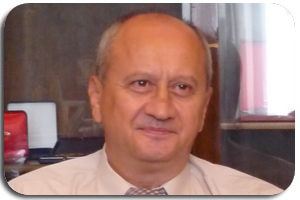 Mr Ioan PanzaruRector of the University of BucharestBucharest Mr Ioan PanzaruRector of the University of BucharestBucharest |  Mr Mihai ConstantinescuPresidentArtexim Mr Mihai ConstantinescuPresidentArtexim | 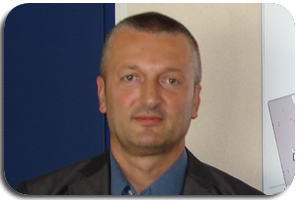 Mr Sorin VornicDeputy General DirectorRomexpo Mr Sorin VornicDeputy General DirectorRomexpo | 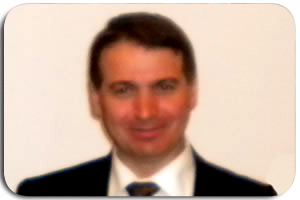 Mr Mihail DumitruMinister of AgricultureMinistry of Agriculture Mr Mihail DumitruMinister of AgricultureMinistry of Agriculture |
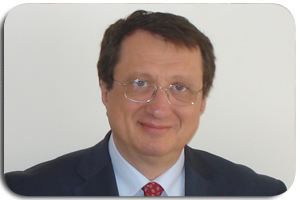 Mr Viorel PanaitPresidentComvex Mr Viorel PanaitPresidentComvex |  Mr. George Prelea / Mr Andrew PreleaPresident / Chief Executive OfficerSouth Pacific Mr. George Prelea / Mr Andrew PreleaPresident / Chief Executive OfficerSouth Pacific | 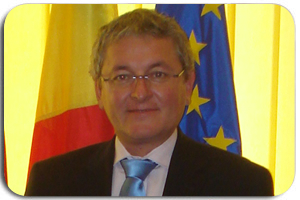 Mr. Boris SchneiderGeneral ManagerAsirom Mr. Boris SchneiderGeneral ManagerAsirom |  Mr Ovidiu DrangaAmbassador of Romania BrusselsEmbassy of Romania in Brussels Mr Ovidiu DrangaAmbassador of Romania BrusselsEmbassy of Romania in Brussels |
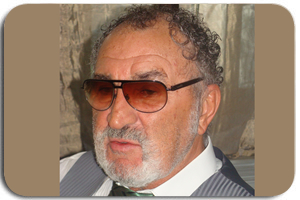 Mr. Ion TiriacAdviser Of The Mutua Madrileña Madrid Open Mr. Ion TiriacAdviser Of The Mutua Madrileña Madrid Open |  Mrs Edit VesserGeneral ManagerBNP Paribas Real Estate Mrs Edit VesserGeneral ManagerBNP Paribas Real Estate | 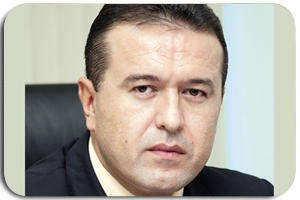 Mr. Mihai DarabanPresidentChamber of Commerce of Constanta Mr. Mihai DarabanPresidentChamber of Commerce of Constanta | 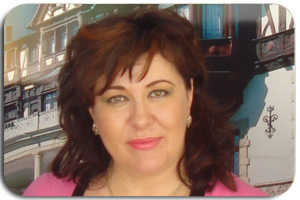 Mrs Corina MartinPresidentANAT (National Association of Travel Agencies) Mrs Corina MartinPresidentANAT (National Association of Travel Agencies) |
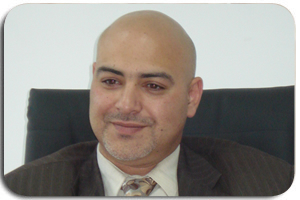 Mr Sherif UssamaCEO of Blue AirBlue Air Mr Sherif UssamaCEO of Blue AirBlue Air |  Mr Dragos Victor StefanescuGeneral ManagerBouygues Mr Dragos Victor StefanescuGeneral ManagerBouygues | 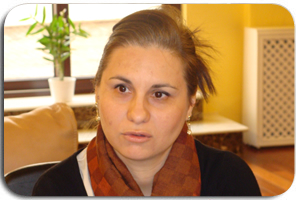 Ms. Maria TudorAmbassador of Romania in SpainEmbassy of Romania in Spain Ms. Maria TudorAmbassador of Romania in SpainEmbassy of Romania in Spain | 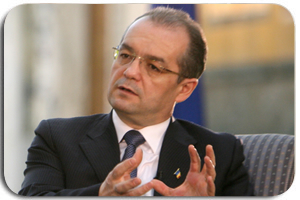 Mr. Emil BocPrime Minister of RomaniaPrime Ministry Mr. Emil BocPrime Minister of RomaniaPrime Ministry |
 ComvexMaritime ComvexMaritime |  ROMAEROAeronautics ROMAEROAeronautics |  Natex Extracte NaturaleFood Processing Natex Extracte NaturaleFood Processing |  University of BucharestEducation University of BucharestEducation |
 Volksbank RomaniaFinance Volksbank RomaniaFinance |  Blue AirTransport Blue AirTransport |  Aviroms Rent A Car SRL - Avis Licensee RomaniaTransport Aviroms Rent A Car SRL - Avis Licensee RomaniaTransport |  ALEXANDRION GRUPTrade & Industry ALEXANDRION GRUPTrade & Industry |
 RAMADA MAJESTIC BUCHAREST HOTELTourism and Hospitality RAMADA MAJESTIC BUCHAREST HOTELTourism and Hospitality |